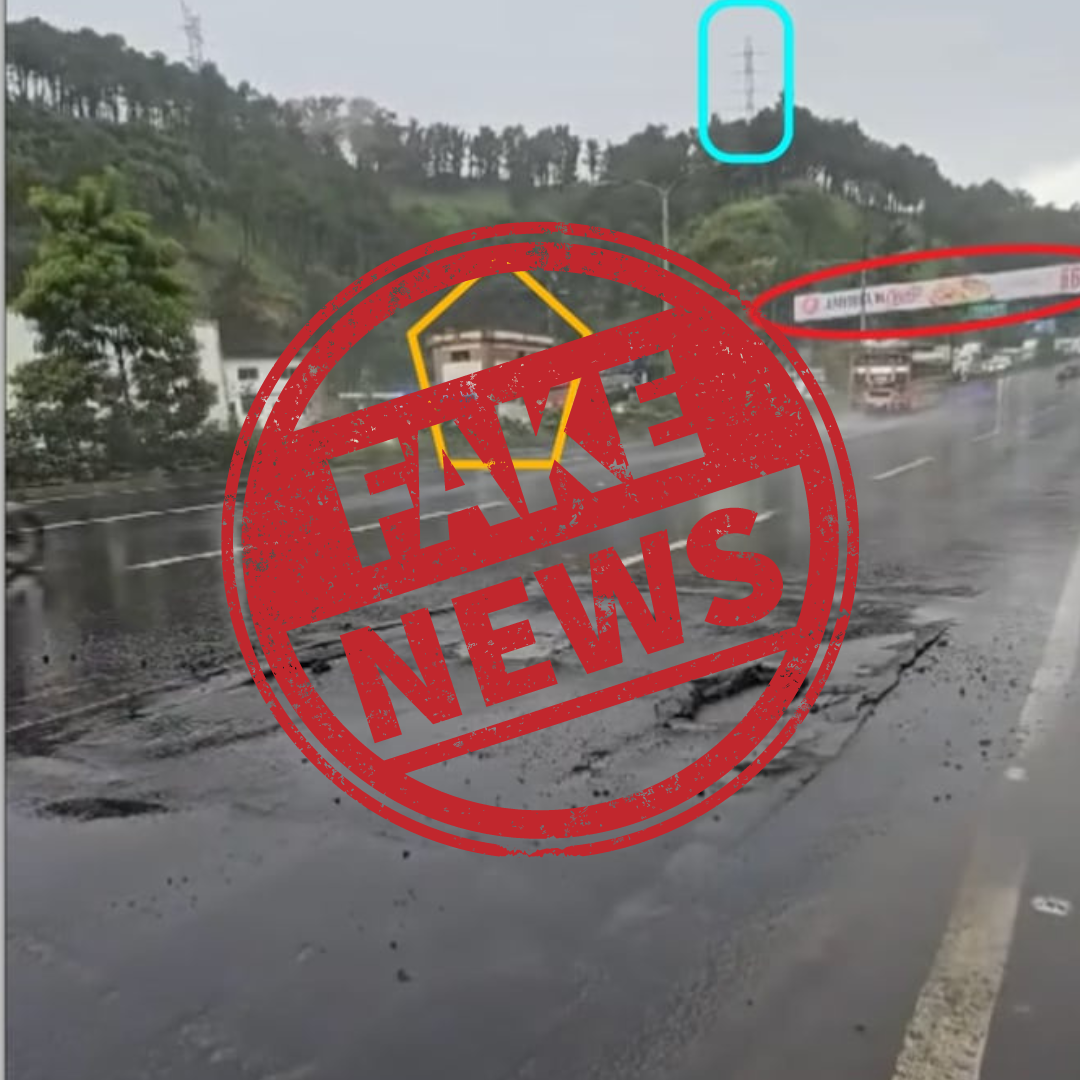Claim:
A viral video shows water spraying out from cracks in a road, allegedly from India.
Fact:
The video is not from India but from Guatemala, specifically the city of Villa Nueva.
Claim
A viral video shows water spraying out from cracks in a road, allegedly from India, with people sarcastically linking it to poor infrastructure and tagging Prime Minister Narendra Modi.
Evidence:
- Reverse Image Search: A reverse search of keyframes from the video led to a post by an account named “Clima Guatemala,” dated September 13. The text, written in Spanish, explained that the video shows damage caused by excessive rain to the asphalt of Kilometre 14 on the Pacific route in Guatemala.
- Social Media Findings: Further keyword searches uncovered multiple social media posts from around the same time, confirming that the video originated in Guatemala. The viral posts mentioned that heavy rains had caused cracks to emerge on the road, leading to risks of sinking in Villa Nueva city.
- Official Reports: Multiple reports indicated that the heavy rainfall on September 12 caused not only this damage but also the collapse of drains and landslides across Guatemala. The viral video specifically shows damage to National Route CA-9 at Kilometre 14, where water from a damaged pipe beneath the road sprayed through cracks, causing the asphalt to lift.
- Geolocation: The location was geolocated via Google Maps Street View, further confirming that the viral video was filmed in Villa Nueva, Guatemala, not India.
Conclusion:
The viral video falsely claims to show a road in India. In reality, it was filmed in Villa Nueva, Guatemala, following heavy rains and infrastructure damage. This incident has no connection to Indian roads or technology.
This is an example of misinformation, not disinformation.
- Misinformation refers to false or inaccurate information that is shared without the intent to deceive. In this case, people sharing the video might genuinely believe it shows an Indian road, not knowing the actual origin of the footage.
Combating misinformation effectively involves a combination of personal responsibility, digital literacy, and proactive measures. Here are steps to help combat misinformation:
1. Verify Before Sharing
2. Strengthen Digital Literacy
3. Encourage Responsible Sharing
4. Use Fact-checking Tools
5. Report Misinformation
6. Engage with Media Critically
7. Stay Updated on Current Fact-checks
8. Educate Others
By practicing these steps, you can play a significant role in reducing the spread of misinformation. In an age where information spreads faster than ever, combating misinformation is crucial to maintaining a well-informed society. By verifying sources, practicing critical thinking, and using fact-checking tools like FactCheck India, each of us can contribute to curbing the spread of false information. Taking a proactive approach not only ensures that we stay informed but also helps protect others from being misled. In the fight against misinformation, education and vigilance are our strongest defenses.


As a Newbie, I am always exploring online for articles that can be of assistance to me. Thank you
A really good post
Understanding the main reasons for auto insurance canceling can help owners prevent burning off one of the most crucial privileges accessible. Thanks for the ideas shared by means of your blog.
Thanks for your posting.
hey this is a good blog post
Good web site! I truly love how it is easy on my eyes and the data are well written. http://www.ifashionstyles.com I am wondering how I could be notified whenever a new post has been made. I’ve subscribed to your RSS which must do the trick! Have a nice day!
Thank you for being of assistance to me. I really loved this article.
Thanks for posting. I really enjoyed reading it, especially because it addressed my problem.It helped me a lot and I hope it will help others too.
Thank you for being of assistance to me. I really loved this article. FactCheck India is my go-to — trusted, well-written, and always on time. It’s no surprise you’ve become India’s top fact-checking voice
I’ve been absent for some time, but now I remember why I used to love this Factcheck India’s website. Thanks , I will try and check back more frequently. I Know you frequently update your factchecking website. I always cross-check with FactCheck India before forwarding anything these days. Thank you for saving us from misinformation.